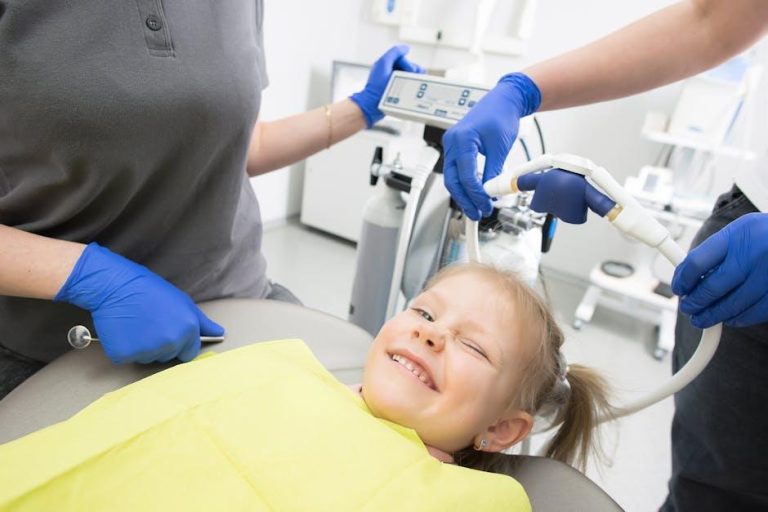1 in 3 Kids Has Dental Problems, Poll Finds – U.S. News & World Report
According to a recent poll reported by U.S. News & World Report, dental problems affect an alarming number of children in the United States, with 1 in 3 kids facing some sort of oral health issue. This statistic highlights an often-underestimated public health concern that impacts childhood development, self-esteem, and overall well-being.
Understanding the Scope of the Problem
Dental problems in children can range from minor issues such as cavities and plaque buildup to more severe conditions like gum disease and tooth infections. The poll findings shed light on the need for increased awareness and proactive steps from parents, caregivers, and healthcare providers alike.
The prevalence of dental problems among children emphasizes several important factors affecting their oral health, including dietary habits, access to dental care, and daily hygiene routines.
Key Findings from the U.S. News & World Report Poll
| Dental Problem | Percentage of Affected Kids | Common Causes |
|---|---|---|
| Tooth Decay (Cavities) | 25% | Poor oral hygiene, sugary diets |
| Gum Disease | 10% | Lack of flossing, plaque buildup |
| Tooth Sensitivity | 8% | Enamel erosion, untreated cavities |
| Missing/Fallen Teeth | 5% | Injury, severe decay |
Common Causes of Dental Problems in Children
Multiple factors contribute to the rising dental issues in children:
- Poor Oral Hygiene: Irregular brushing and flossing can quickly lead to plaque and tartar buildup, increasing the risk of cavities and gum disease.
- Diet High in Sugars and Carbohydrates: Frequent consumption of sugary snacks and drinks feeds harmful bacteria in the mouth, accelerating decay.
- Limited Access to Dental Care: Many children lack regular dental checkups due to socioeconomic barriers, preventing early detection and treatment.
- Lack of Parental Supervision: Young children often need guidance to maintain proper brushing and flossing habits.
- Orthodontic and Structural Issues: Misaligned teeth or jaw problems can complicate oral hygiene and increase vulnerability to dental problems.
Benefits of Maintaining Good Oral Health in Kids
Ensuring your child has a healthy smile offers numerous advantages beyond just appearance:
- Prevents Pain and Discomfort: Healthy teeth reduce the chances of toothaches and infections.
- Improves Nutrition: Strong teeth allow kids to chew food properly, aiding digestion and growth.
- Boosts Confidence: A clean, healthy smile supports positive self-image and social interactions.
- Promotes Lifelong Habits: Early dental care encourages lifelong commitment to oral hygiene and overall health.
- Avoids Costly Treatments: Prevention leads to fewer dental procedures and lower healthcare costs over time.
Practical Tips to Prevent Dental Problems in Kids
Parents and caregivers can take these proactive steps to reduce dental problems among children:
- Establish a Brushing Routine: Encourage brushing twice daily with fluoride toothpaste for at least two minutes.
- Floss Daily: Teach kids to floss or supervise younger children to remove plaque between teeth.
- Limit Sugary Snacks and Drinks: Replace candies and sodas with healthier alternatives like fruits and water.
- Regular Dental Visits: Schedule biannual checkups and cleanings to catch issues early.
- Use Dental Sealants: Consult your dentist about protective sealants on molars to prevent decay.
- Lead by Example: Parents should model good oral care habits.
Case Study: A Success Story in Children’s Dental Health
Consider the experience of the Johnson family from Ohio:
- Their 7-year-old daughter, Mia, had multiple cavities early on due to frequent sweets and irregular brushing.
- After consulting with their pediatric dentist, they implemented a strict oral hygiene routine including supervised brushing and dietary changes.
- Mia started visiting the dentist every six months, and her dental health improved dramatically within a year, avoiding painful procedures.
- The family credits education and parental involvement for restoring Mia’s oral health and confidence.
Conclusion: Taking Action to Protect Your Child’s Smile
The poll revealing that 1 in 3 kids has dental problems is a wake-up call to families across the country. Childhood dental health is not just about preventing cavities—it is about ensuring overall wellness, confidence, and quality of life. Understanding the causes, risks, and consequences empowers parents and caregivers to take simple yet effective steps toward better oral hygiene.
By establishing healthy habits, seeking regular dental care, and educating children early, you can help reduce the incidence of dental problems and secure a brighter, healthier future for your child’s smile.
For more information on pediatric dental care and tips, visit U.S. News & World Report – Dental Health Section.


